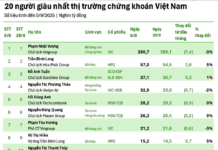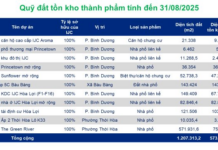**Vietnam’s Push for Green Energy: Overcoming Challenges to Meet Ambitious Targets**
According to the National Power Development Plan for the 2021-2030 period, with a vision to 2050 (Power Development Plan 8), Vietnam aims to reach an offshore wind power capacity of approximately 6,000 MW by 2030 and a remarkable 70,000 – 91,500 MW by 2050. For gas-fired power, the total capacity of projects to be invested in and operated by 2030 is 30,424 MW, transitioning to hydrogen by 2050. The additional capacity from these two energy sources is expected to account for about 50% of the total capacity required, playing a crucial role in supplying electricity to the national power system.
To accelerate the development of gas-fired power and offshore wind power, and to contribute to Vietnam’s commitment to achieving net-zero emissions by 2050, the government has issued Decision 1009/QD-TTg dated August 31, 2023, on the Project for Implementing the Political Declaration on Establishing a Fair Transition Partnership (JETP) and Decision 165/QD-TTg dated February 7, 2024, on the Strategy for Development of Vietnam’s Hydrogen Energy until 2030, with a vision to 2050.
**CHALLENGES AHEAD**
Assessing the actual investment and construction situation, at the recent workshop “Promoting the Development of Green Energy: Current Status and Solutions,” Dr. Nguyen Quoc Thap, Chairman of the Vietnam Oil and Gas Association, shared that the O Mon Thermal Power Plant I has been put into operation but is still running on oil, awaiting gas supply from the Lot B Gas Project to switch to gas-fired power generation.
Additionally, the Nhon Trach 3 and 4 gas-fired power plants, with a capacity of 1,624 MW, are under construction, having achieved 85% progress and are expected to start trial operations by the end of 2024. In the coming time, Vietnam plans to implement 18 gas-fired power projects, including 9 projects using domestically exploited gas and 9 projects using LNG. The total additional capacity from these projects is expected to reach 16,400 MW.
For offshore wind power, despite the ambitious planning of 6,000 MW by 2030, there is currently only one project that has been approved by the Prime Minister for parameter measurement research. According to Dr. Vo Tri Thanh, Director of the Institute for Brand and Competition Strategy, the implementation of the energy transition under the Power Development Plan 8 is crucial for Vietnam’s green transition and the realization of its net-zero commitment.
While there has been some progress, experts believe that challenges remain in achieving the goals for gas-fired power and offshore wind power development.
The first challenge lies in the structure and technology of Vietnam’s energy sector. Developing gas-fired power to replace coal-fired power requires a change in the structure of Vietnam’s power industry within a limited time frame to meet the government’s targets. However, time is not on their side, and the projects that have been and are being constructed account for only a small portion of the planned capacity.
Discussing this challenge, Prof. Le Anh Tuan, Chairman of the University Council of Bach Khoa University, pointed out that due to insufficient technological advancement, Vietnam is facing difficulties in developing new energy industries such as gas-fired power, with hydrogen being the most challenging. The government has set a target for hydrogen to account for 10% of final energy consumption by 2050. Additionally, the cost of hydrogen storage is four times higher than the production cost. For other green energy sources like wind power, investing in storage facilities is essential for maximizing efficiency.
*This article was published in the Vietnam Economic Magazine, Issue 33-2024, released on August 12, 2024. To read the full article, please visit: https://postenp.phaha.vn/chi-tiet-toa-soan/tap-chi-kinh-te-viet-nam*







































